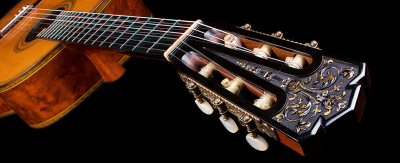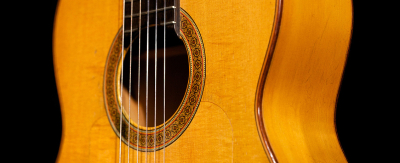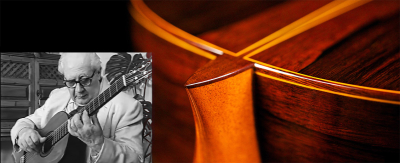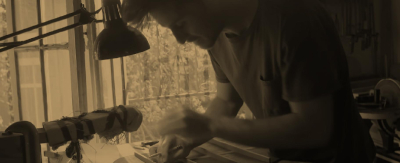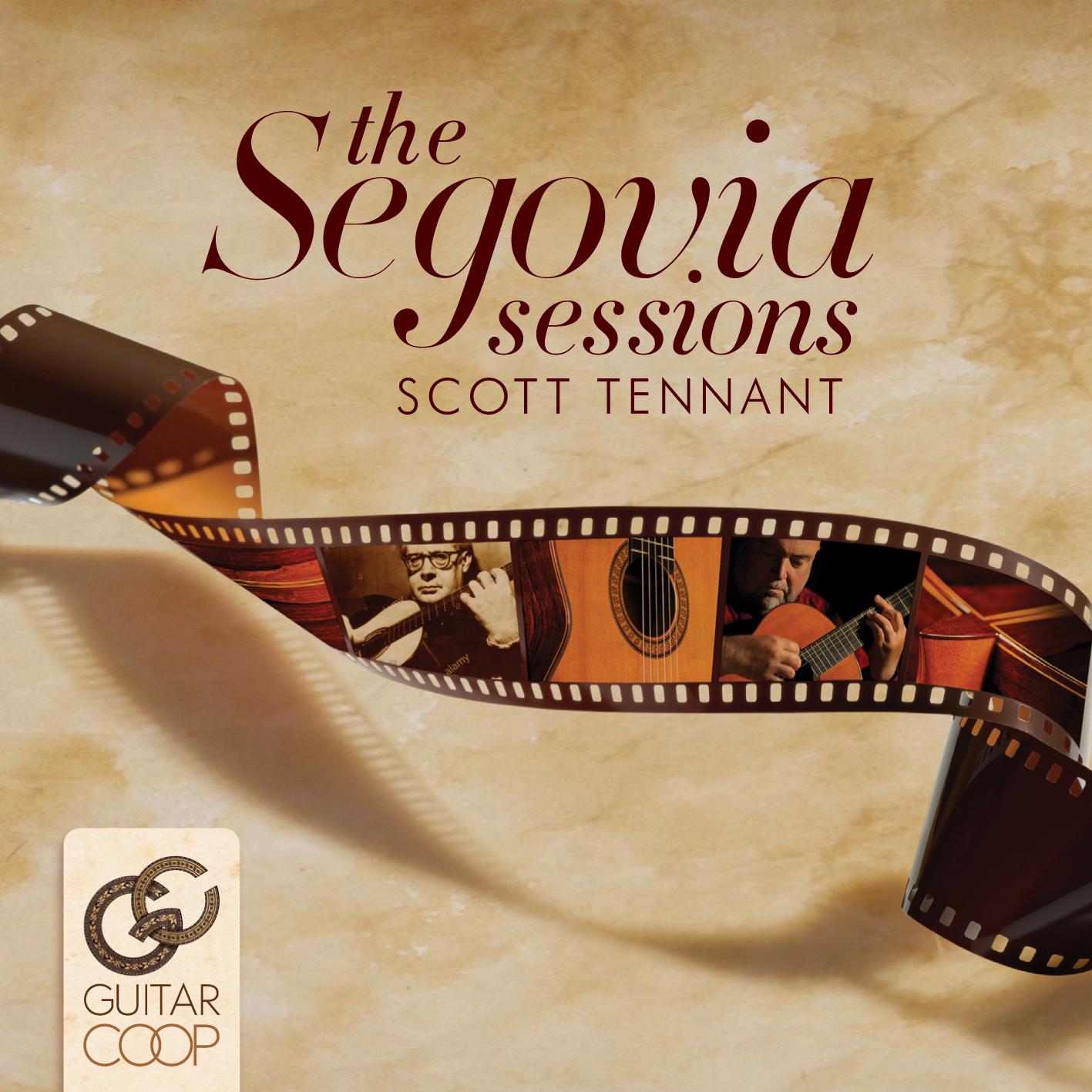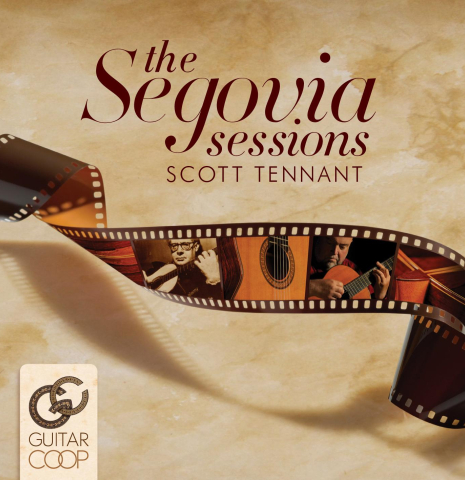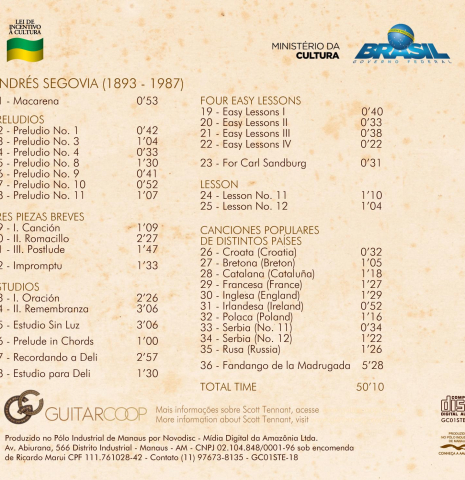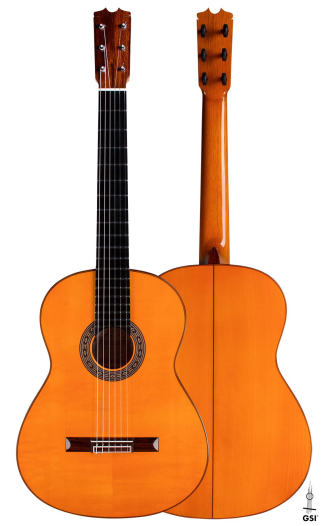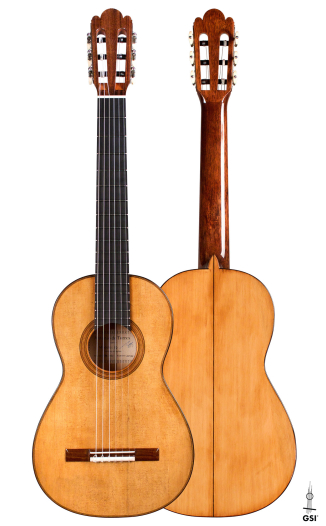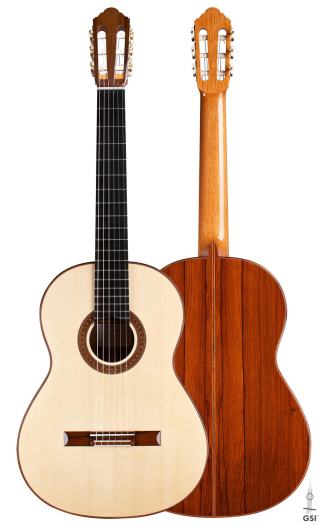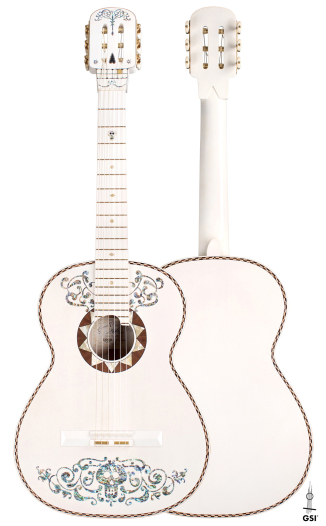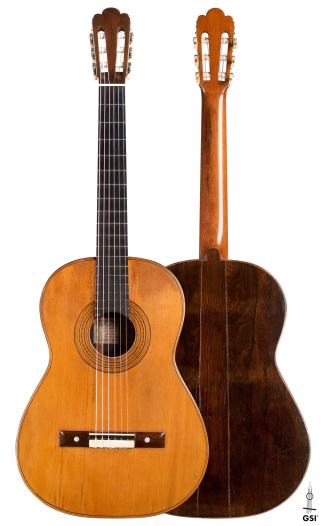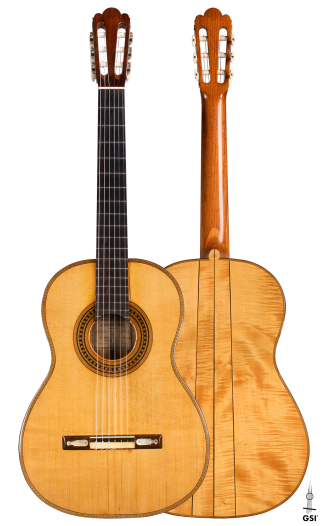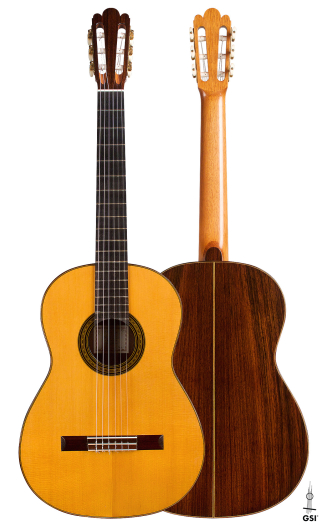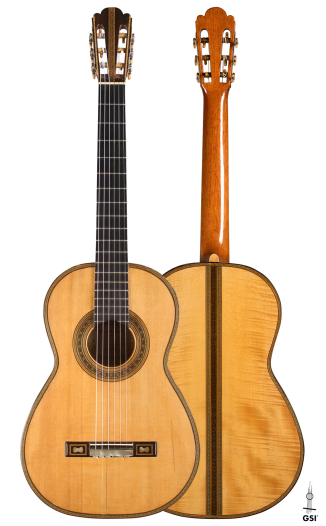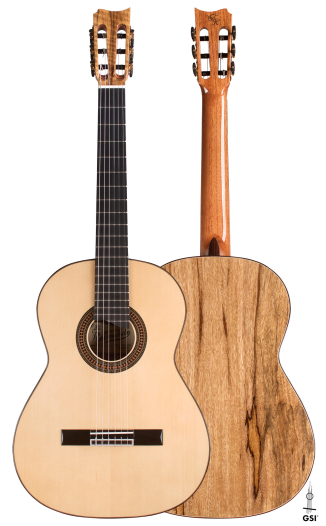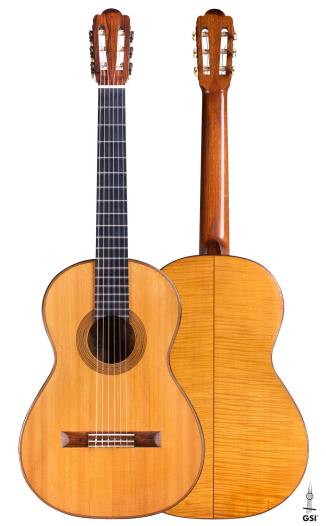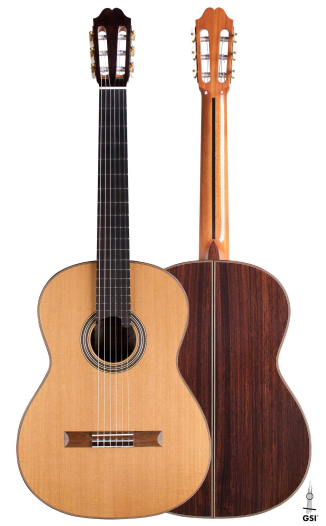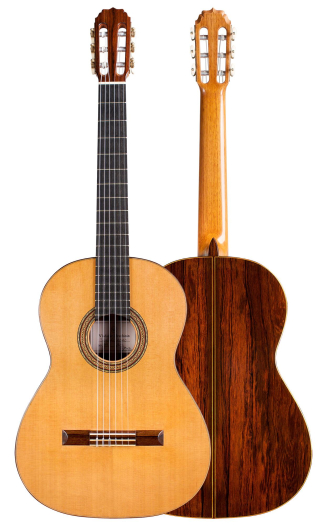Scott Tennant - The Segovia Sessions
$15.00
The 1969 José Ramirez guitar heard on this recording was built by "AM" (Antonio Martinez), who was a favorite luthier in the Ramirez workshop among top players at this time (their initials are stamped onto the internal heel block inside the guitar). Its first owner was the great Andrés Segovia, who acquired it new in 1969, and who, according to José Ramirez III, "habitually" played this instrument in his concerts from 1969 to 1980, at which point it went back to the Ramirez shop to have the neck refinished. The instrument later had three other owners between 1980 and 1994 before it was purchased by Russell Cleveland of Dallas, TX for his collection of historic guitars – which would become the basis of the famous coffee-table book "The Classical Guitar – A Complete History" (this guitar appears on pages 55-57). While in the Cleveland collection, it received a good deal of attention and was shown to all the top concert artists who passed through Dallas on their tours – in fact, the great Segovia protégé Christopher Parkening played on this guitar when performing in Dallas. It remained in the Cleveland collection until November 2015, when GSI acquired it with the purchase of the entire collection of 63 guitars. This guitar, along with the other 62 in the collection, had only been in the GSI showroom for a matter of days when Scott dropped by to see some of the goodies in the collection, and this one "struck him to the core" (his words). Although the guitar sold very quickly, the new owner was kind enough to let us keep the guitar in our possession until we finished up this once-in-a-lifetime project with Scott. The time we’ve all spent with this guitar has been a real pleasure and privilege and I find it quite fitting that we should finally send it off to its new home with the capstone that is this recording, beautifully played by Scott Tennant, who deeply understands both the music and the guitar, and their connection to one another. Special thanks also to Augustine strings who co-sponsored this project and supplied the strings for the recording. I think the Maestro would be proud.
David Collett - President, Guitar Salon International
TRACK LISTING:
ANDRÉS SEGOVIA (1893 - 1987)
01 - Macarena 0’53
PRELUDIOS
02 - Preludio No. 1 0’42
03 - Preludio No. 3 1’04
04 - Preludio No. 4 0’33
05 - Preludio No. 8 1’30
06 - Preludio No. 9 0’41
07 - Preludio No. 10 0’52
08 - Preludio No. 11 1’07
TRES PIEZAS BREVES
09 - I. Canción 1’09
10 - II. Romacillo 2’27
11 - III. Postlude 1’47
12 - Impromptu 1’33
ESTUDIOS
13 - I. Oración 2’26
14 - II. Remembranza 3’06
15 - Estudio Sin Luz 3’06
16 - Prelude in Chords 1’00
17 - Recordando a Deli 2’57
18 - Estudio para Deli 1’30
FOUR EASY LESSONS
19 - Easy Lessons I 0’40
20 - Easy Lessons II 0’33
21 - Easy Lessons III 0’38
22 - Easy Lessons IV 0’22
23 - For Carl Sandburg 0’31
LESSON
24 - Lesson No. 11 1’10
25 - Lesson No. 12 1’04
CANCIONES POPULARES DE DISTINTOS PAÍSES
26 - Croata (Croatia) 0’32
27 - Bretona (Breton) 1’05
28 - Catalana (Cataluña) 1’18
29 - Francesa (France) 1’27
30 - Inglesa (England) 1’29
31 - Irlandesa (Ireland) 0’52
32 - Polaca (Poland) 1’16
33 - Serbia (No. 11) 0’34
34 - Serbia (No. 12) 1’22
35 - Rusa (Russia) 1’26
36 - Fandango de la Madrugada 5’28
TOTAL TIME 50’10

